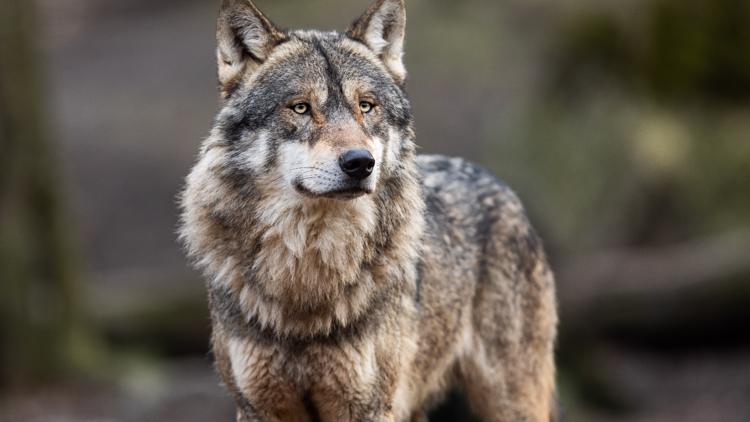ST PAUL, Minn. — Humans may be unwittingly impacting the health of the deer herd in northern Minnesota by allowing wolves to hunt more efficiently.
That is the early conclusion of new research carried out by the University of Minnesota's College of Food, Agricultural and Natural Resource Sciences, in conjunction with partners including Northern Michigan University, the University of Manitoba, Voyageurs National Park and the Voyageurs Wolf Project.
Project researchers found three major human impacts that create an environment that appears to favor predators in the deer-wolf dynamic.
- Wolves disproportionately hunt and kill deer fawns around recently logged areas - those logged within the past five years - likely because clear-cut forests provide dense stands of young saplings that pop up to replace harvested trees. Those saplings supply ample food for deer and hiding spots for newborn fawns. Wolves seem to have learned recently-logged areas are prime hunting spots, turning the nursery grounds into risky areas for fawns in the summer months.
- Although it seems counter-intuitive, wolves tend to kill deer fawns closer to human infrastructure, like cabins, year-round homes and barns. Researchers believe this is likely in part due to the fact that feeding of deer by humans is common in northern Minnesota, and wolves have figured that out.
- The creation of roads, trails and linear clearing for powerlines allows wolves to travel faster and more easily than navigating dense woodlands. The study found wolves are killing fawns in disproportionate numbers closer to these human-made paths.
“When we put all of the pieces together, it is pretty clear that the cumulative effects of all major aspects of human activity in the Northwoods - logging, infrastructure development, and road and trail development - have fundamentally changed where and how wolves hunt deer fawns here,” said Sean Johnson-Bice, a Ph.D. candidate from the University of Manitoba and co-lead author of the study. “The rules of this predator-prey game change when people alter ecosystems, and it’s possible we have created conditions that may have tipped the scales in the predators’ favor.”
Project organizers say future research is needed to understand whether human activity has simply influenced where wolves end up killing deer fawns, or whether development in the wild has actually increased wolf hunting efficiency of deer.
Results of the study were published in the August edition of Ecological Applications.
WATCH MORE ON KARE 11+
Download the free KARE 11+ app for Roku, Fire TV, Apple TV and other smart TV platforms to watch more from KARE 11 anytime! The KARE 11+ app includes live streams of all of KARE 11's newscasts. You'll also find on-demand replays of newscasts; the latest from KARE 11 Investigates, Breaking the News and the Land of 10,000 Stories; exclusive programs like Verify and HeartThreads; and Minnesota sports talk from our partners at Locked On Minnesota.
- Add KARE 11+ on Roku here or by searching for KARE 11 in the Roku Channel Store.
- Add KARE 11+ on Fire TV here or by searching for KARE 11 in the Amazon App Store.
- Learn more about the KARE 11+ app for Apple TV in the Apple App Store.
- Learn more about KARE 11+ here.
Watch more KARE in the Air:
Check out amazing drone video of Minnesota's most beautiful and iconic spots in our YouTube playlist:



